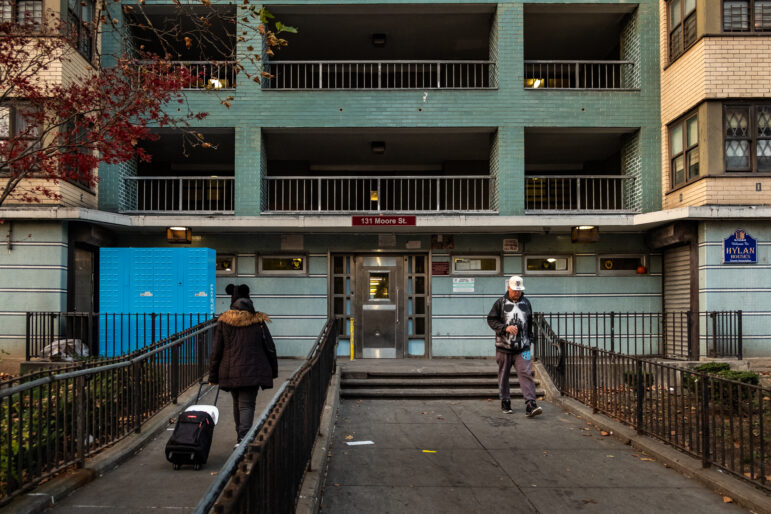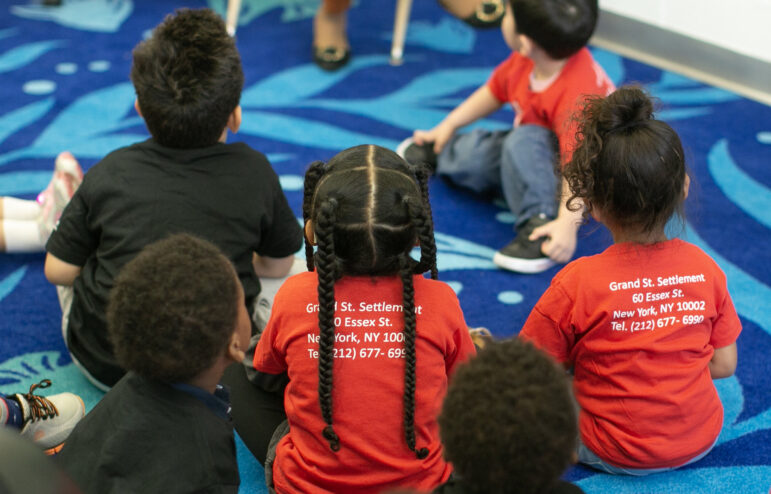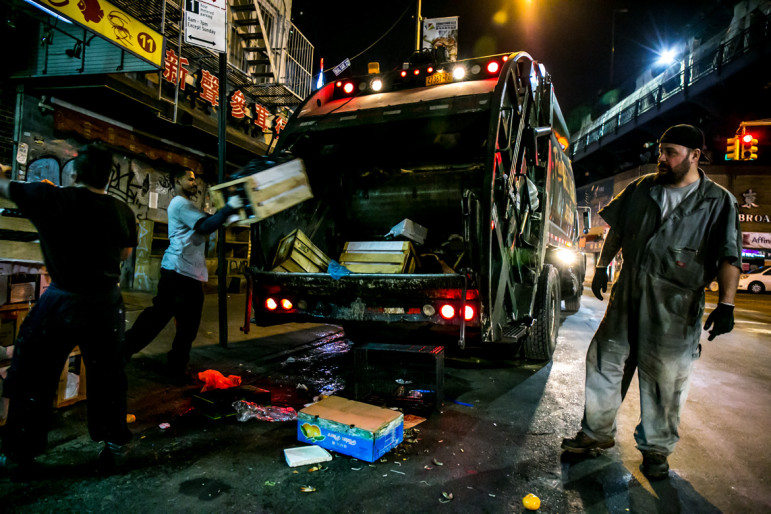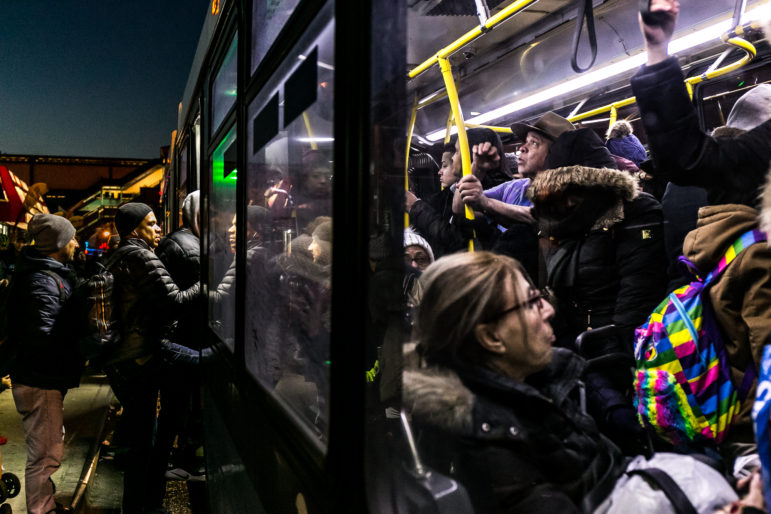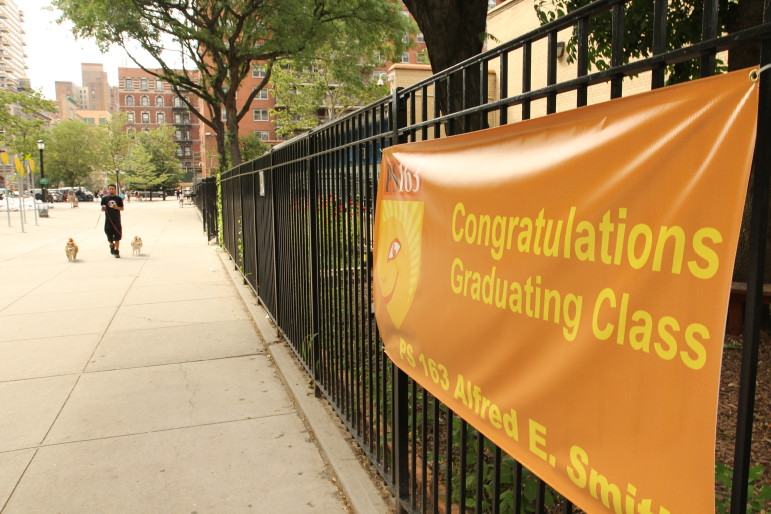
Patrick Donachie
A banner welcomes the end of the school year at P.S. 163 on Manhattan's Upper West Side. Though most classes are done there and at other DOE facilities, the issues facing New York's educators, parents and students do not take a summer break.
The clock struck 2:40 p.m. on Thursday afternoon, and the kids were out the door.
At P.S. 163 on Manhattan’s Upper West Side, dismissal time found schoolchildren racing for two yellow buses stationed outside or into the arms of waiting parents. Teachers called after them to have a wonderful summer, and that they’d see them the following year. Within an hour of first dismissal, the clamor was over, and the hallways were quieter. For the most part, over the next two months, those hallways shall remain that way.
P.S. 163 and other public schools throughout the city mark the official end of the 2014-2015 school year on Friday. As the end of the year approaches, teachers conclude their lessons, administrators scramble over the final details of graduation ceremonies and students look ahead to the two months they’ll spend on break.
But the summer break is as much a season of concern as it is one of celebration. Over the coming months educators, parents, policymakers and non-profit organizations will work to stem any loss of learning that may impact students during their time away from the classroom.
Many believe that summer breaks are a remnant of the country’s agrarian past, but summer vacation’s origins are partially rooted in the vacationing patterns of the turn-of-the-century urban aristocratic class. Families with means would often escape cities during the sweltering summer months, and reformers concerned about student burnout determined it best to shorten what was at the time a nearly year-round school schedule. While rural schools often held classes during the summer to accommodate the harvests of the spring and fall, gradually those schools revised their own schedules to match the urban schools to establish a uniform national education calendar.
The first popular analysis of the “summer slide”, as summer learning loss has come to be known, was conducted in 1906 by William White, a professor at the State Normal School in upstate New York. White tested several students in math skills at the end of one school year, and re-tested them at the beginning of the following year; he found that the students had regressed in their mathematical proficiency over the break.
Over the next century, further research strengthened White’s assertion about summer slide, and some analyses found that the long summer breaks didn’t always affect students to the same degree. According to a famous 1996 study on the effects that summer vacation has on students’ achievement test scores, all students lost up to two months of grade level equivalency in math, regardless of their socio-economic status.
However, researchers found that middle-class students showed small gains in literacy over the summer, while students in lower income brackets fell victim to a significant loss. Kate Willse, the chief program officer at the National Summer Learning Association, says the problem was exacerbated with each passing summer break.
“Those gaps are cumulative. They’re going to grow and grow each summer,” she says. “On average, teachers are spending three to four weeks covering what they covered the previous year. They have to make up that lost ground.”
Few systems go year-round
President Barack Obama and U.S. Secretary of Education Arne Duncan have both expressed support for longer school days and a shorter summer break, and while most school districts across the country continue to operate under the traditional school calendar, some schools transitioned to year-round schedules in recent decades. In 1990, Los Angeles became one of the first cities to mandate a year-round calendar, but as of the 2012-2013 school year all but three L.A. schools had reverted back to the traditional calendar. This past March, Las Vegas announced that 11 schools would move to a year-round schedule beginning in August. According to the National Center for Education Statistics, about 14.4 percent of schools in the country operated on a year-round schedule as of 2008, with most located in the South and West.
However, most year-round schools do not actually extend the length of the calendar. Instead, school administrations separate groups of students into different tracks that would attend school at different times of the year to alleviate overcrowding.
Research on extended-year schooling suggests that it is beneficial for students, particularly those from lower-income backgrounds, but much of that research remains inconclusive. In 2010, the American Educational Research Association conducted an analysis of prior studies on extending the school year.
“Of the eight studies examining the relationship between EY (extended year) and academic achievement, seven found some evidence of a positive relationship between EY and achievement,” the authors of the study wrote, but admitted that the “evidence is still relatively weak.”
Sarah Yu, the director of children’s literature at Success Academy Charter Schools, says that although the issue of summer slide has garnered more attention in recent years, further action was still necessary.
“There’s been increased public awareness,” she says, “but being aware of something doesn’t necessarily mean having the tools to solve it.”
There are many approaches to keeping schoolchildren from falling behind, and there’s no single solution, according to Willse. “Summer learning runs the gamut,” she says. “There’s no one way to do summer learning.”
Parents support vacation options
According to a 2014 study by the Afterschool Alliance, parents enthusiastically support summer programs and learning. 85 percent of surveyed parents supported public funding for summer programs, and 51 percent wanted their child to participate in a summer program. However, only one-third of families reported that they had at least one child in a summer program, and most of those families were paying to send their children to those programs at an average weekly cost of $250 per child.
Some New York parents, and the politicians representing them, proved to be just as passionate about the issue earlier this year. On May 13th, the de Blasio administration informed 40 schools across the city that millions in funds originally allocated for summer programs at those schools would be re-directed towards the mayor’s Renewal Schools Program, which intends to improve 94 struggling schools within a three-year time period.
Two weeks later, on May 28th, New York City Schools Chancellor Carmen Fariña and Ray Orlando, the Department of Education’s chief financial officer, testified before the New York City Council’s Education Committee. Outside the chambers on the City Hall steps, parents and advocates protested the loss of the funding, hoisting placards with phrases like “we want summer camp, not bummer camp!”
At one point, several Council members left the committee hearing to support the crowd that had assembled outside, and during Fariña’s testimony, some expressed concern that parents and children who were promised those summer programs had been shortchanged.
“It seems like there are 17,000 young people that are doing the right thing, and schools that are doing the right thing, that are being penalized, and have nowhere, no programs to go this summer,” Finance Committee Chair Julissa Ferreras said during the hearing. “We have no answers to be able to give our constituents. So, we are not happy.”
Within hours, the de Blasio administration reversed course and announced that the endangered summer programs would indeed be funded.
Options exist
Though Friday marks the final day of the school year for the 1.1 million children in New York’s public schools, those facilities will not stay shuttered for the entirety of the next two months. Summer school launches on July 1st for students who are in danger of not being promoted to the next grade. The Department of Education has announced a new science, technology, engineering and math (STEM) program for second, seventh and tenth graders that will provide intensive, hands-on learning for its participants. Students have the opportunity to train on NASA flight simulators in the Department’s Summer Space Camp. There are library literacy programs and police athletic leagues, as well as a multitude of summer and day camps throughout the five boroughs funded by a variety of public and private sources.
But summer vacation also generates unique challenges for educators and students. Violence during the warmer months can put students outside of school in harm’s way, and administrators across the city struggle to plug the gaps produced by a high teacher attrition rate. Summer school teachers work to ensure that their students are properly prepared for the next grade level, and educators across all forms of public, parochial and charter schools face the uncertainty of how the summer slide may impede the educational development of the students under their supervision.
Throughout this summer, City Limits will present a series of stories investigating the challenges and opportunities that arise when there are no more pencils, books or “teachers’ dirty looks.” Though most classes may be done for the summer, the issues facing New York’s educators, parents and students do not take a break.
The National Summer Learning Association is a valuable resource for events dedicated to encouraging educational development throughout the summer months. To see a listing of events in New York and throughout the country, visit their map here.


